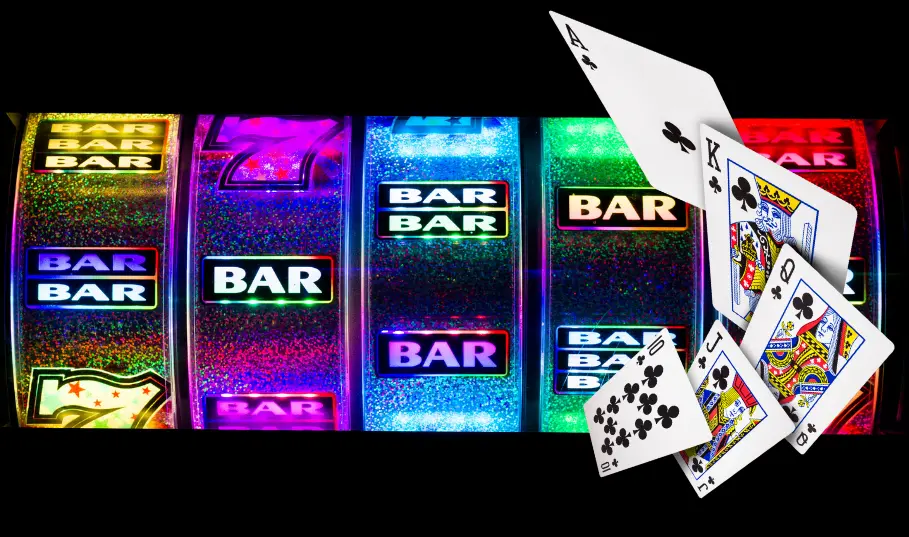Ever wondered what are the actual slot odds of winning or getting the jackpot when spinning those reels? Probability is the mathematical concept used to determine the likelihood of a specific event occurring. In slots, this refers to the chance of landing a winning combination. The lower the probability of hitting a winning combination, the higher the potential payout. However, it’s essential to note that a lower probability of winning doesn’t increase the chances of winning in subsequent spins due to the independence of each spin. Each spin is a fresh start so to say.
Why should you be interested in slot odds then? Many poker players from our team Beasts have cleared dozens or even hundreds of casino deposit bonuses for 5-figure profits, which is only possible by doing the math before claiming a bonus. While using gambling to make profits is certainly not financial advice, if you choose to do that it requires careful calculations on profitability of welcome bonuses.
If you’re new to slots and want to try them out, we recommend starting with no deposit bonuses instead. This way you don’t risk your own money for wagering – some online casinos offer 10, 20 or even 50 USD worth of spins without a deposit.
But don’t worry, the math is 8th grade tops so it’s not that complicated! However, you need to be familiar with the basic terms and calculations that are used to determine payout odds. Let’s get you on track for exactly that:
Basics of Slot Odds
Similarly to poker odds, slot odds are the cornerstone of understanding the dynamics of winning in slot games. They represent the mathematical likelihood of a player achieving a winning combination. Here’s a deeper look into some of the fundamental components that constitute slot odds:
Random Number Generator (RNG)
A Random Number Generator (RNG) is central to every slot machine, a computational algorithm that generates thousands of random numbers every second, corresponding to different reel positions. It ensures the unpredictability of each spin, making it virtually impossible to foresee the outcomes or establish patterns.
Symbol Combinations and Paylines
Each slot machine consists of a series of symbols and pay lines. The combination of symbols that align on these pay lines determines the payouts. Different symbols have different values, and the rarity of the symbols correlates with the payout amount; the rarer the symbol, the higher the payout.
Probability of Symbol Combinations
Calculating slot odds involves evaluating the probability of landing different symbol combinations. Given the numerous possible combinations in modern video slots, which often feature five reels with multiple symbols, the total number of combinations can be in the millions, impacting the odds substantially.
Payout Percentages
Every slot machine has a predetermined payout percentage, which refers to the money the machine is programmed to return to players over the long run. If a machine has a payout percentage of 95%, it will return 95 cents of every dollar played, retaining 5 cents as revenue. However, this doesn’t mean every player will get 95% of their money back each session, as the percentage is averaged over an extensive number of spins, often amounting to millions.
Impact of Bet Size
While the core odds of hitting a winning combination remain constant regardless of bet size, the actual payouts vary. A larger bet typically enables access to larger prizes and potentially multiple pay lines, but it risks depleting the bankroll more swiftly.
Calculating Slot Odds and Understanding the Paytable
Calculating slot odds can seem complex, primarily due to the range of outcomes each spin can produce. However, at its core, the process is about understanding the number of possible symbol combinations and determining how many result in a win.
Role of the Paytable
The paytable is an essential feature in slot machines, acting as the information hub for players, detailing the various winning combinations and the corresponding payouts. It serves to inform players about the potential rewards associated with different symbol combinations and any special features or bonus rounds the game may offer.
Symbol Values
Each symbol in a slot game has a specific value assigned to it, and this value is usually detailed in the paytable—the rarer and more valuable the symbol, the higher the payout. Usually, symbols are categorized into low-paying, represented by playing card values, and high-paying, theme-related symbols.
Winning Combinations
The paytable outlines which sequences of symbols constitute winning combinations and the payouts associated with those combinations. It will also clarify whether the combinations should appear in a certain order, whether they should start from the leftmost or the rightmost reel, and whether they need to fall on a specific pay line.
Special Features
Beyond standard symbol combinations, paytables provide insights into special features such as wilds, scatters, and bonus symbols. These features often unlock free spins, bonus rounds, or multipliers that can significantly enhance winning potential. Understanding these elements and how they interact is pivotal for maximizing gameplay value.
Payouts and Bet Levels
The paytable also depicts how payouts vary with bet levels. Some slot games allow players to adjust the bet level, affecting the number of coins wagered per line. This feature enables players to modulate payouts, balancing risk and reward according to individual preferences.
How to calculate Odds in a Complex Modern Slot Game
Modern slot games can often feature multiple reels with multiple symbols on each reel and various pay lines, making the calculation of odds considerably intricate. Here’s a simplified example to illustrate how one might approach calculating odds in such a scenario:
Example: A Modern Video Slot
Suppose a modern video slot has five reels. Each reel has 25 different symbols, and there are 20 pay lines. Let’s also assume that this slot has one winning combination for the jackpot.
Step 1: Calculating Possible Combinations
To calculate the total number of possible combinations, you raise the number of symbols on one reel to the power of the number of reels:
Combinations=25×25×25×25×25=255=9,765,625Combinations=25×25×25×25×25=255=9,765,625
So, there are 9,765,625 possible combinations with five reels and 25 symbols per reel.
Step 2: Considering Paylines
The total number of combinations only gives the possibilities for one pay line. If there are 20 pay lines, then the odds of hitting the jackpot on any given spin are:
Odds = 20 (pay lines) / 9,765,625 (combinations) ≈ 1 in 488,281 (rounded)
Considerations
- Bonus Symbols and Wilds: Many modern slots feature wild symbols and bonus symbols, which can substitute for other symbols, thus modifying the calculation further.
- Multiple Winning Combinations: Additionally, there might be more than one winning combination for the jackpot, depending on the game rules, altering the odds significantly.
- Multiple Paylines: The configuration and number of paylines also significantly impact the odds, with more pay lines generally increasing the chances of winning.
- Varied Bet Levels: Some slots allow the activation of more pay lines or the qualification for jackpots with higher bets, affecting the overall odds.
What Are Payout Percentages: An In-Depth Examination
Payout percentages, often called Return to Player (RTP) percentages, play a pivotal role in slot gaming dynamics. They represent the portion of the total wagered amount a slot machine is programmed to pay back to players over an extensive series of spins. These percentages serve as indicators of the long-term expected performance of the game, offering insights into the potential profitability and longevity of gameplay.
Calculation of Payout Percentages
To clarify, if a slot machine has an RTP of 96%, it implies that, theoretically, it will return $96 for every $100 wagered, holding $4 as revenue for the casino. It’s vital to note that this is a theoretical statistic calculated over countless spins and does not guarantee a similar return in each individual gaming session. The actual experiences of players can be starkly different, with some winning above the stipulated percentage and others falling below.
Variability and Volatility
The variability inherent in slot games due to their reliance on RNGs and the inherent house edge means that payout percentages are averages and not certainties. Furthermore, the volatility of a slot impacts the frequency and magnitude of payouts. High volatility slots may have extended periods of no winnings interspersed with occasional large payouts, contributing to a lower RTP. Conversely, low volatility slots yield frequent, smaller rewards, potentially offering a higher RTP.
Adjustment and Regulation
Payout percentages are not static and can be adjusted by casino operators within regulatory limits. Regulatory bodies enforce strict standards to ensure fairness and transparency, requiring casinos to adhere to predetermined RTP ranges. Players benefit from reviewing these percentages on game information screens or casino websites to select games that align with their risk tolerance and gameplay preferences.
Strategic Implications
Understanding and considering payout percentages are essential for formulating gameplay strategies. While they do not provide a foolproof method to secure winnings, they offer a foundational perspective to manage expectations and inform bet sizes, game selections, and overall gaming approaches. Opting for games with higher RTPs may marginally enhance winning prospects, but it’s crucial to factor in individual game dynamics, player preferences, and bankroll constraints.
What Are Jackpot Odds and Payouts
Jackpot odds represent the likelihood of landing the rarest and most lucrative winning combination in a slot game. The probability of hitting a jackpot is typically extremely low, rendering them the most elusive and enticing aspect of slot games.
Odds in Fixed Jackpots
Fixed jackpots have a set value that doesn’t change, regardless of how many times it’s won. For instance, a slot game might feature a fixed jackpot worth $10,000, ensuring that every player who hits the jackpot receives this amount.
Odds in Progressive Jackpots
Conversely, progressive jackpots grow over time, accumulating a portion of every bet on the machine or network of machines. For example, the Mega Moolah slot by Microgaming has a progressive jackpot that starts at $1 million and has reached over $20 million in the past before being won. For progressive jackpots, the odds can be even more astronomical, often akin to winning the lottery. Precise odds are rarely disclosed, but it’s universally recognized that the chances of hitting a progressive jackpot are extremely slim due to the life-changing sums on offer.

How Jackpots Affect Overall Payouts
While the allure of jackpots is undeniable, their influence on a game’s overall payout structure is profound. Games featuring substantial jackpots often allocate a significant portion of each bet to feed the jackpot, impacting the frequency and amount of regular, smaller wins.
(RTP)
The inclusion of progressive jackpots typically reduces the base game RTP. For instance, a game might have an overall RTP of 92%, but when the contribution to the progressive jackpot is factored in, the base game RTP might be lower, affecting the frequency and size of non-jackpot wins.
Volatility
Games with substantial jackpots often exhibit high volatility, implying that wins are infrequent but can be substantial. This characteristic can lead to prolonged periods without wins, which may not appeal to players who prefer more consistent, albeit smaller, rewards.
Benefits of Understanding Slot Odds
While the mechanics of slot odds may seem daunting, gaining insights into these basics is crucial for both novices and seasoned players. A well-informed approach allows players to set realistic expectations, develop suitable strategies, and enhance their overall gaming experience by mitigating undue losses and maximizing enjoyment.









